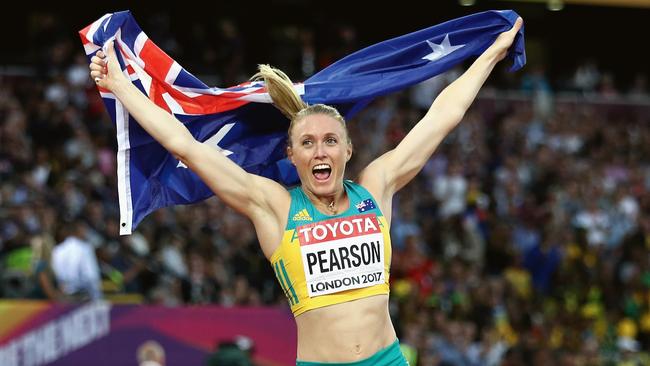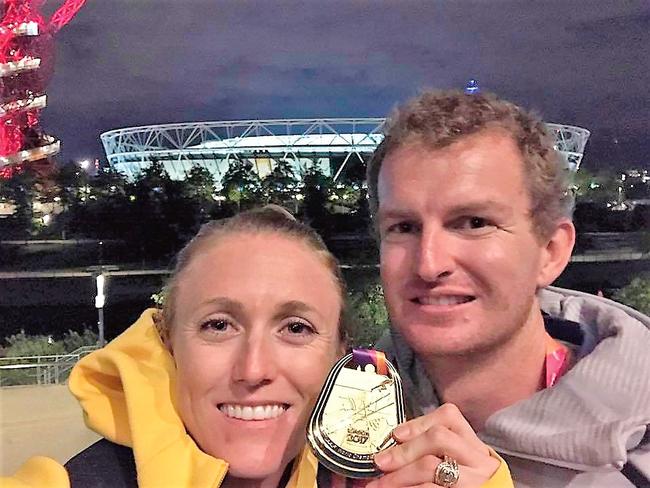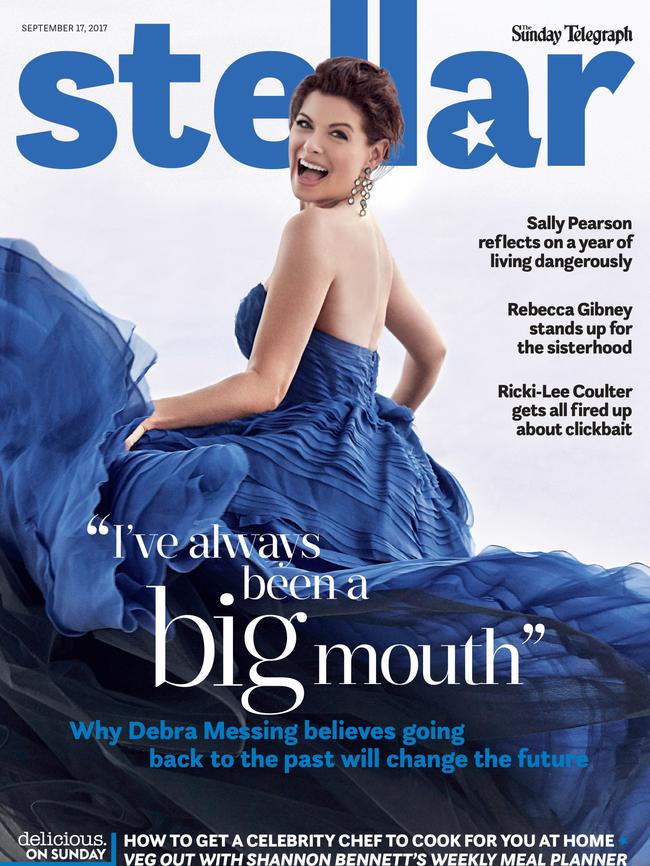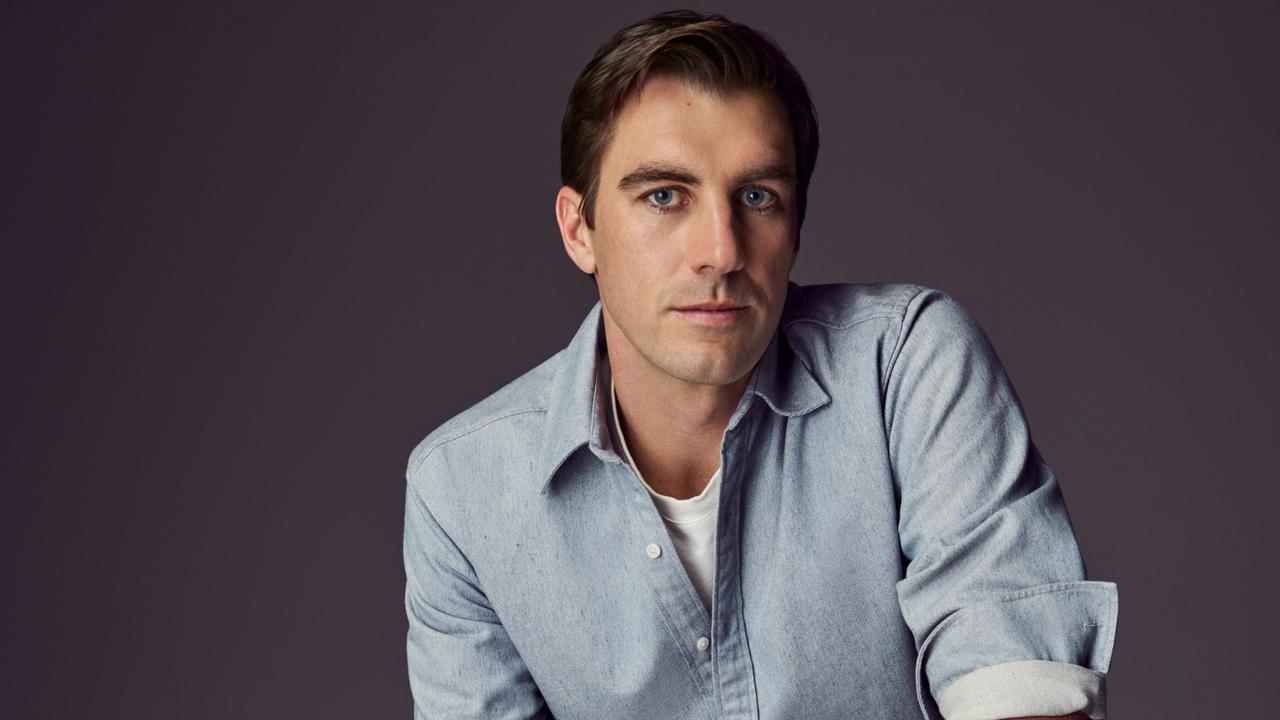Sally Pearson’s long road back to the top
AFTER injuries forced her out of the Olympics, the gold-medallist hurdler has made an extraordinary comeback. But in an exclusive interview, she reveals it hasn’t been easy.

Stellar
Don't miss out on the headlines from Stellar. Followed categories will be added to My News.
SALLY Pearson has learnt many things on the long and often painful road to the top of world sport. She has learnt how to fight back from injuries that should have ended her career; to listen to her body, and rest when she needed to heal.
She has learnt how to talk to sponsors and perform in the glare of a very public spotlight. She has even learnt how to coach herself.
And in the past year, the Olympic gold-medallist hurdler has also learnt that terrorism is a fact of life in Europe. “You don’t want to always be looking over your shoulder and checking every single person out that walks past you, and being afraid to go on trains, because that is exactly what [the terrorists] want,’’ Pearson tells Stellar.

“You’re always cautious about being in crowds and I am now, more so this year than any other year that I’ve travelled.”
Living abroad has helped Pearson understand that Australia’s relative immunity from terrorism should never be taken for granted.
“[Australia is] quite a safe country in terms of terrorism, but at the end of the day you still have to be careful. You don’t know where they’re going to strike next. That’s the scary part. And I find it hard to not be scared, I guess, for that reason.’’
When Pearson, 30, meets with Stellar inside a hotel lobby in Zürich, she is just 24 hours away from winning the Diamond League 100m hurdles final, a professional event that will land her a $63,000 prize — enough to pay for her next year of travel and competition.
It is not difficult to understand why, in the midst of preparing for another big sporting event, a topic like terrorism is top of mind.
The Barcelona attacks, which killed 16 people including seven-year-old Australian boy Julian Cadman, happened only days earlier. Two people had just been stabbed to death in Finland. And back in May, Pearson was preparing for a race in Manchester when a terrorist detonated a bomb 10 minutes down the road at a pop concert, killing 22 adults and children.
Pearson says she is proud to have played a tiny part in helping the traumatised city respond. “There were questions about whether [the race] should go on,” Pearson explains.
“For the safety, as well, but also respect for the victims and the families.” Ultimately, the race was held, and Pearson participated.

“That was really nice, actually — a proud moment for Manchester. And I’m glad I could be there to help them through it. I didn’t do much… but it showed them that they’re strong.’’
When Pearson turns 31 this week, she will be focused on the next big event — her hometown Commonwealth Games on the Gold Coast in April next year. She is a Games ambassador and will now take a break from her training, and begin building up again in late September to be in peak condition in time for the 100m hurdles event.
“It’s huge,” Pearson says. “That’s what I’m looking forward to now.” After that, she may compete in the world championships again in 2019. And maybe, depending on how her body holds up, one final visit to the Olympics in Tokyo in 2020.
“I hope so — it all depends on how my body is going,’’ she says. “If I can be at my best again, that would be fantastic to probably finish off my career.’’
And it’s been a pretty extraordinary one. Pearson won the 2011 and 2017 world championships, the 2012 Olympic gold and an Olympic silver in 2008. In 2014, she was made a Member of the Order of Australia. And now she is inching back towards her career-best form: in August, she ran 12.59 seconds in the world championships in London, six years after first winning that event with a time of 12.28, the fourth fastest time in history.
Her win in Zürich clocked in at 12.55.
This string of honours and superior athletic ability give Pearson well-earned bragging rights.
But, after all these years, she remains the down-to-earth Queenslander who was first spotted by a coach as she blitzed the field in a Little Athletics meeting in Townsville, aged 12.

Husband Kieran Pearson, the high-school sweetheart she married in 2010, travels with her and helps manage her many commitments. There is no team of minders or advisers tagging along. She did her own hair and make-up for Stellar’s photo shoot and, with the race final the next day, would not budge out of jeans and a comfy jacket from her sponsor Adidas.
The Pearsons travel light — most notably without a coach, after Pearson made the decision in 2016 that she would do it herself.
“When I first started I sat there looking at a blank screen going, ‘What have you done?’’’ she recalls. “[But] once I got writing [a training program], I just kept going and going and going and going.’’
This relentless stamina has helped Pearson overcome injuries that would have destroyed many others — including a shattered wrist, hamstring tears and the Achilles problems that forced her out of the Rio Olympics last year.
Now that she’s back, Pearson says “it’s going well”. But she is also keen to remind everyone, “I worked hard to get here. It definitely didn’t start off that way. I had a lot of broken bits to fix, getting back into training and making sure my body wouldn’t fall apart again.’’
A video posted by Pearson on social media shows her powering through a set of push-ups, a heavy weight on her back. Look closely and you’ll see one of her arms isn’t straight — it never will be again, after she tripped on a hurdle at the Diamond League event in Rome two years ago.
The photographs of her screaming in agony afterwards tell the story of 12 broken bones and a dislocation. It has taken every ounce of her self-discipline and determination to recover, and not just regain her fitness and form but also improve her times. It’s a commitment that often sees her collapse on the ground or become physically ill after a heavy training session.
Pearson credits those early years of pushing herself as hard as she could with providing benefits to her as an older athlete. Back then, her muscles retained memory and so could be finetuned more easily. “It’s pretty amazing how I can just in a few weeks’ time be pretty fit at a level I think is reasonably high, and can do the workload without dying on the ground or vomiting my guts up as much,” she says. “Not everybody does. My training partner is completely different to what I am… he doesn’t vomit — ever. I’m so jealous of him.”

Sally Pearson is no automaton going round and round a track. She is always thinking — about the next training session, the trip to the physio, the ice baths, the massage. Also the sponsor’s appearance, the media commitment, the next race.
And about one day starting a family.
“It’s something I think about all the time,” Pearson says, “and Kieran and I talk about sometimes. We keep saying we love our life so much how it is. We’re pretty selfish at the moment, and I guess you can’t really be too selfish when you want to be parents.
“I suppose if you get pregnant [then] it switches pretty quickly. We’ll know when we are both really ready, that it will happen. Right now? I don’t think we are.’’
In any event, time is still on her side. Elite athletes have limited careers — their bodies can’t take the punishment forever. Pearson has thought hard about what comes after sport, and how to avoid that dangerous period when newly retired athletes try to build a new life — some of them struggling to make the transition and falling into a cycle of depression, alcohol and drug abuse as they lose their way.
“We dedicate our childhood, our teenage years, our early adulthood to this — and then it’s gone,’’ she says. “What do you do for the rest of your working years? Especially as most of us haven’t made enough money to survive for the rest of our lives.
“You’ve been the best in the world, then you go into a job where you’ve got to start at the bottom — literally at the bottom — and work your way up again. And it’s like, ‘Do we have enough willpower to be able to do that?’ You’re never going to find that same high, or that same adrenaline rush, as you get when you were doing your sport.’’
Pearson has spent four months on the road this year, and says her routine “is a bit of a shambles’’. So she tries to put some order in her day and, no matter where she is in the world, will have breakfast, go for a training session and then eat whatever she can find for lunch. Her training is tightly managed, so it is surprising to hear an athlete of her calibre so laid-back about diet.
“I don’t deprive myself of anything,” says Pearson. “Except sweets. It’s not really depriving myself either — I had a piece of chocolate yesterday.”
In the few weeks after competition, training winds down and Pearson allows her body to recover, which means she and Kieran get to indulge in their favourite hobby: eating out.
Celebrating her achievements, she says, involves “going to a really nice restaurant and ordering their specialty, whatever it is. We love going out to eat. We go out to breakfast — a lot. And lunch — a lot. And dinner! A lot.’’

In other words, the Pearsons aren’t the only young couple spending their house deposits on smashed avocado; this is the kind of normality that has helped make her such a popular figure at home.
Yes, she says, Australians prefer sporting heroes to be humble. But, she argues, “They also like a larrikin. They like an underdog… but they also like a winner.”
During her illustrious career, Pearson has embodied all of those traits at different times. But if one has endeared her to us most, it may be her grit — the determination that shines through every time she gets back on the track after a devastating injury or disappointment, and is on full display as she basks in the glow of her comeback.
To those in the stands or watching on TV at home, it is impressive. To Sally Pearson, it is simply another challenge worth accepting. “I just had to see if I could get back to my best and whether that was going to be enough,” she says.
“Deep down, I knew I loved what I did. And I knew that if I could get back to my best, then I am the best.”


